Southwest Michigan field crop update – April 22, 2021
The 2021 growing season got off to a fast start in many places across Michigan fueled by dry conditions that traced their roots back to last fall.

Weather
Overall this spring, we are well ahead in heat units as shown in the growing degree day graphics. Even with the cooler temperatures the past 10 days (not included in the current graphs), we are still nearly two weeks ahead. Although not even close to conditions in 2012, we are well above normal so far this year. Warm conditions in late March and early April also allowed a good window of opportunity to apply burndown herbicides on winter annuals and cover crops. Some soybeans and a good amount of potatoes were also planted during this period. Our recent cold snap has driven soil temperatures down into the 40s, but with a rebound expected starting this weekend, soil temperatures should recover quickly.
With the dry period late last season, precipitation levels well below normal for most of the winter, and dry conditions early this spring, producers have been able to conduct fall or early spring tillage for the first time for several years without appreciable risk of compaction. Precipitation totals over the past month were near average, although for the most part, rainfall has only occurred over a few days this spring which has left opportunities for growers to get fertilizer spread and fields prepped for planting very early.
Most of southwest Michigan remains in a D1 moderate drought category. This can be seen primarily in reduced water levels in shallow ponds. Recent rainfall has helped to alleviate some of the dry conditions here at a surface level, but drought conditions in the western US are anticipated to deepen over the summer. We may see around 0.25 inch of rain on Saturday, but the next best chance for precipitation will come next Wednesday as a weather system moves through the Great Lakes region. The outlook for the end of April calls for warmer than normal conditions with a slight chance of higher than normal precipitation.
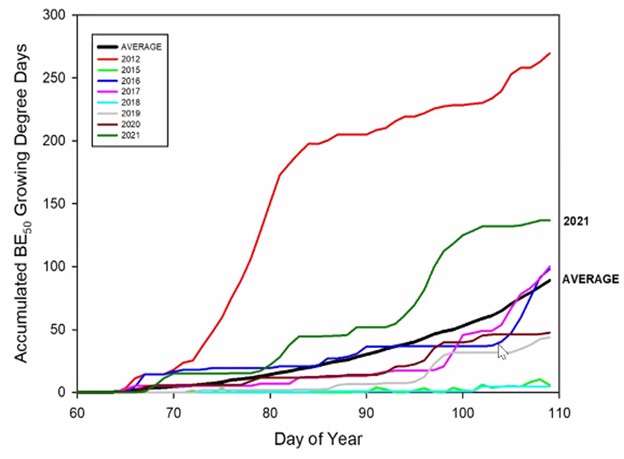
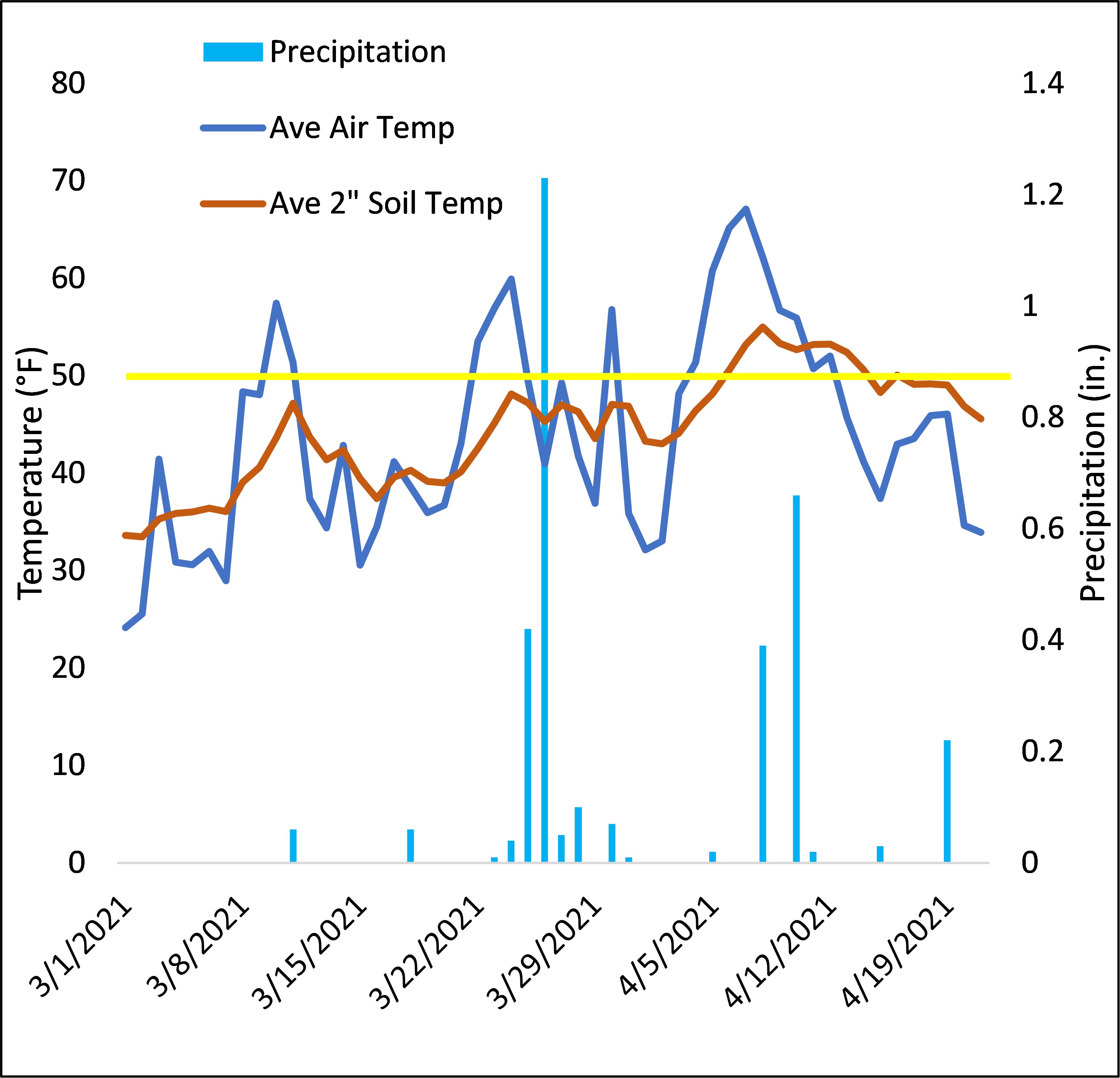

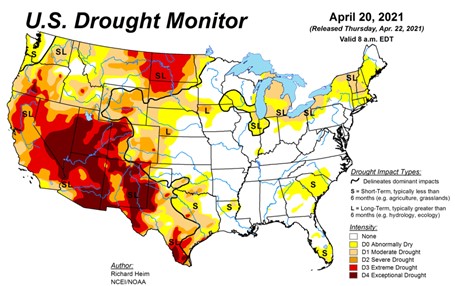

Crops
Wheat looks a little peaked due to the extreme cold conditions we have just experienced. Most fields are currently at Feekes 4 or 5, and fertilizer and fungicide applications were being made in some fields. Expect wheat to advance to Feekes 6 (growing point above ground) in the next week or so.
Alfalfa, which had been growing quite well, has also been set back due to the cooler temperatures and recent deep freeze. We will be looking over these crops for signs of damage from the cold as the crops begin to recover this next week.
Pests
With the rapid recovery of temperatures expected over the weekend, we anticipate many growers will want to begin burndown applications on fields that have not been tilled or previously sprayed. Michigan State University Extension weed control specialist Christy Sprague suggests growers may want to give the cover crops and weeds a couple of extra days to recover from the freezing temperatures to be able to uptake the herbicides effectively for obtaining the best results from the herbicide applications.
With burndown applications where glyphosate-resistant horseweed (marestail) is an issue, it is important to understand that emerged horseweed must be controlled before planting. There are several options for control depending upon the type of soybeans that you plant. Review the “Keys to management in no-till soybean” fact sheet for a comprehensive discussion of various control options and restrictions for each system.

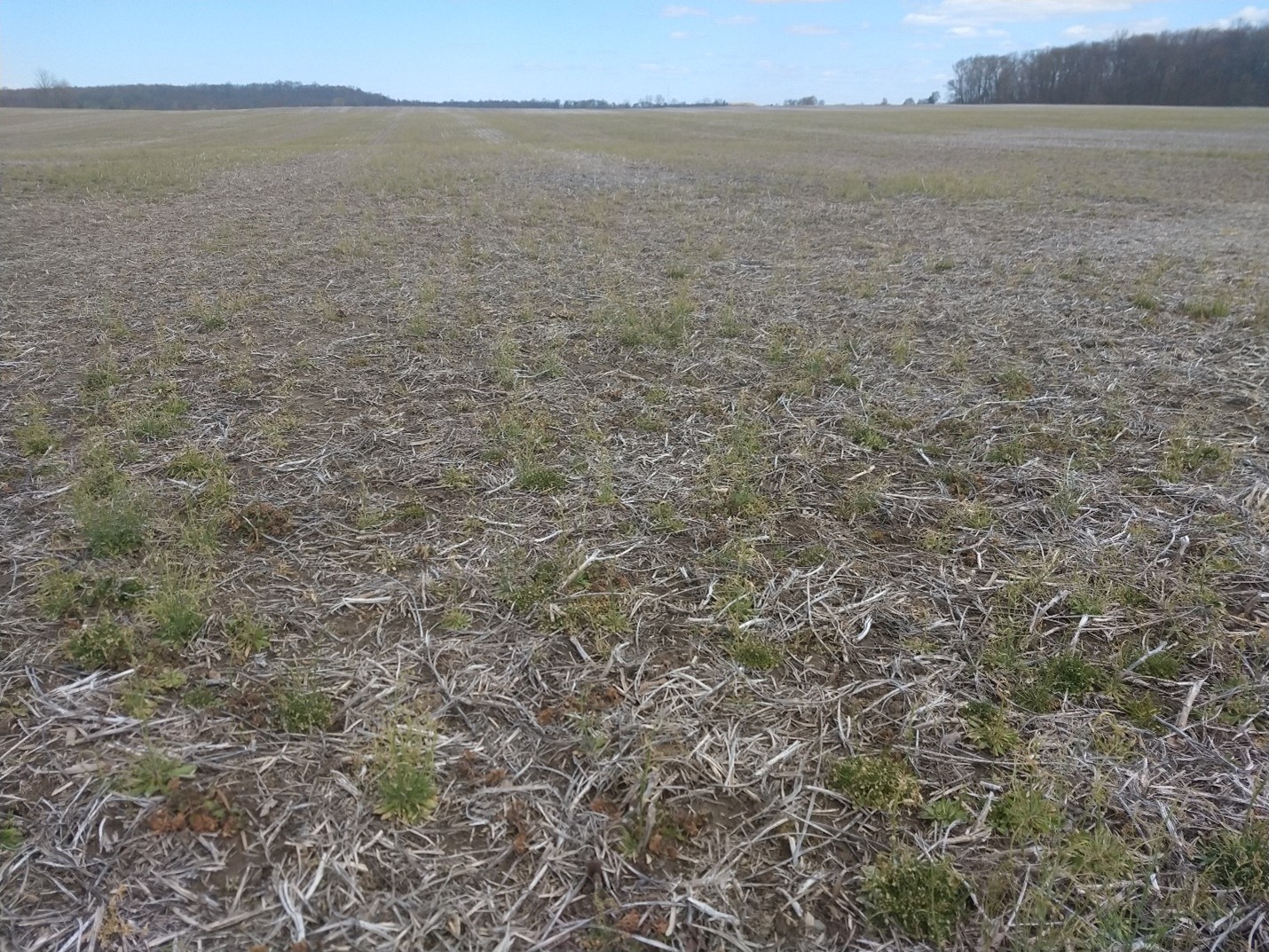
Although black cutworm and true armyworm captures have begun in Indiana, few if any have been found thus far in southern Michigan. You can stay tuned to future southwest Michigan field crop reports or visit the Great Lakes and Maritimes Pest Monitoring Network 2021 website for moth capture updates this season.
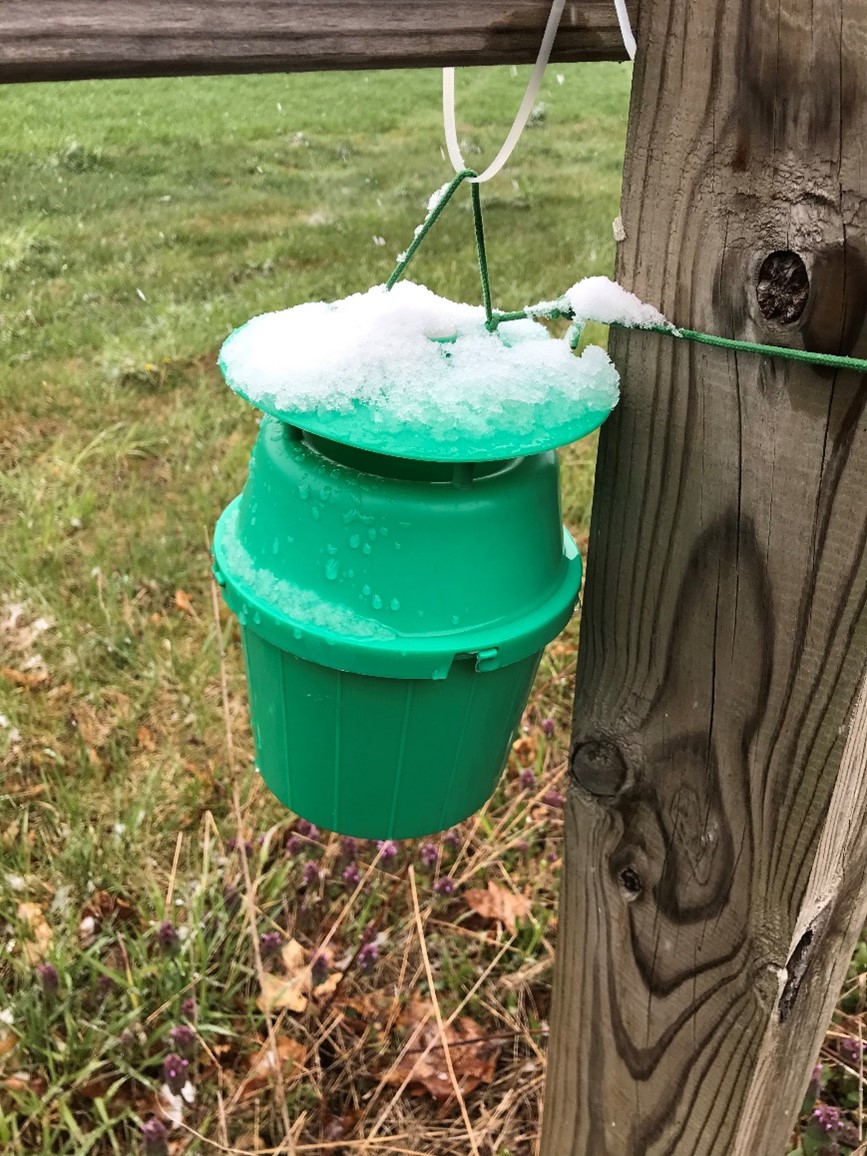
Asiatic garden beetle white grubs can cause feeding damage to corn and alfalfa fields. The grubs migrate to the soil surface where they begin feeding on root tissue and residue in the soil. We have seen initial feeding activity in late April on henbit and purple deadnettle, but presumably they can feed on a wide range of winter annual and cover crop species. There are no rescue treatments for white grubs, so early detection is important to be able to use soil insecticides to reduce damage from these pests if they are present in moderate numbers. High numbers of grubs are likely to cause damage even when soil insecticides are used.
If you have seen patches in fields that have had good stands early and seem to become very uneven in the past, you may want to watch for the larvae during tillage operations or even scout for them with a shovel. Focus on sandy ridges in fields or places where there you have seen damage in the past. Asiatic garden beetle white grubs can be distinguished from other species by the bulbous white palps that are visible on their cheeks.
This is the most aggressive white grub species in Michigan when it comes to feeding on corn roots. Visible damage can be seen as the season progresses from Asiatic garden beetle levels of one to two larvae per square feet, usually in the form of uneven growth, plant yellowing or purpling. MSU Extension field crops entomologist Chris DiFonzo uses a golf course cup cutter to sample for these pests. As the crop develops, the grubs will usually be easy to find in the heavy rooted zones near the stem of the corn plants. An excellent collection of pictures of the pest can be seen in a talk given by DiFonzo at the Indiana CCA Conference.



 Print
Print Email
Email




